
views
Keeping Your Hair Healthy
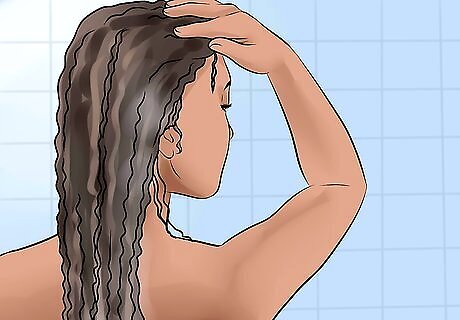
Keep your hair hydrated. The biggest struggle with transitioning your hair is preventing breakage due to damage and dryness. Do what you can to keep your hair hydrated and conditioned by using a conditioner on a daily basis. Every evening before bed, thoroughly incorporate either coconut oil or olive oil into your hair and let is soak for 30 minutes to an hour. This will help replenish your hair with moisture and nutrients that will strengthen the demarcation line (the part of the hair where the transition is occurring). To keep the shampoo from stripping moisture, try to wash your hair one to three times a week. On shampoo days, apply to the roots only so that you get the oil and debris at the scalp without stripping your strands. Then, condition as per usual. Consider using a leave-in conditioner for your hair during the day. Apply some to your hair before you style it, paying careful attention to the demarcation line.
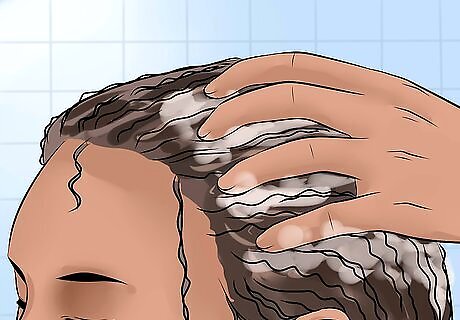
Use a deep conditioner regularly. Deep conditioning treatments take adding moisture to a new level. Although they are typically only used once a month or so, transitioning hair needs extra conditioning and can handle the treatments more frequently. Purchase a deep-conditioning treatment from your local beauty supply store, and apply it to your hair once a week. Alternately, you can also choose to visit a salon and get deep-conditioning treatments regularly. Follow the bottle instructions for your deep conditioner. If you’re feeling frugal, another great alternative to a deep conditioner is using a bottle of mayonnaise. Although it sounds (and might smell) a bit unappealing, it can work wonders on adding moisture to your hair. Apply it to your hair once a week for 30 minutes to an hour. If you decide to have a professional deep condition your hair, try looking for someone who specializes in transitioning hair. They’ll be able to provide you with products and services designed specifically to meet your needs.
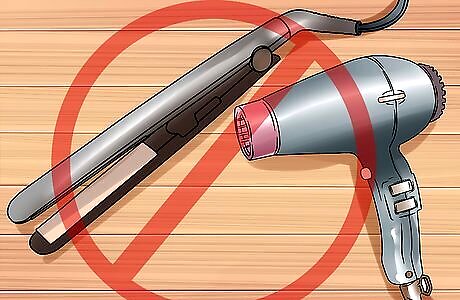
Stay away from heat. In general, hot tools should be avoided if you’re trying to protect your hair. Using curling irons, flat irons, and blow driers can stress your hair and cause breakage, specifically at the demarcation line. While transitioning your hair, do all that you can to allow it to be as natural as possible. Avoid hot tools, and if necessary, limit their use to only one day a week at most.
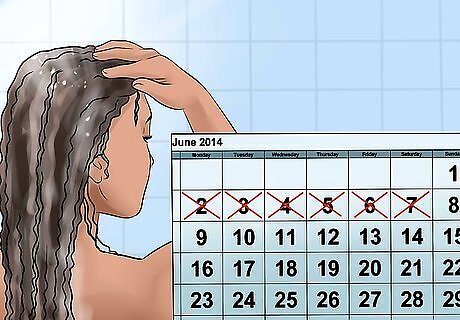
Limit your hair washings. This goes hand in hand with adding moisture to your hair; washing your hair frequently strips your strands of the natural oil that helps to keep it strong. Wash your hair as little as you can, using plenty of conditioner when you do. If you’re able, wash your hair once every 7-8 days so that there is plenty of time for your natural oils to thoroughly coat each strand of hair.
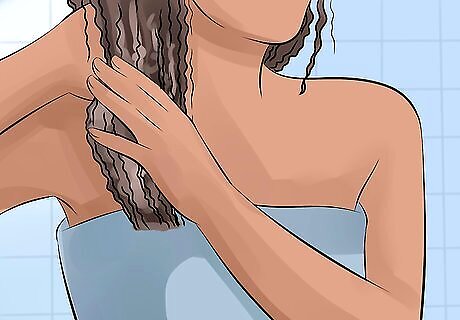
Give yourself a hot oil massage. Waiting for your hair to grow out is often the most frustrating part of the growing-process. Rather than waiting idly by, you can promote new hair growth by giving yourself frequent scalp massages. Use a bit of oil (coconut, olive, avocado, etc.) warmed slightly to massage your scalp. This will stimulate the hair follicles and help the strands to grow a bit faster. Hot oil massages can be done as frequently as you would like, but should be done at least once a week for the best results.
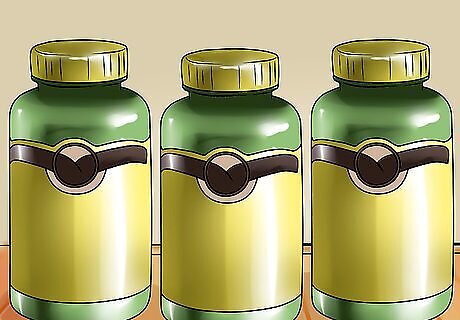
Promote hair growth with supplements. Maintaining your vitamins and minerals is important to general health (in addition to hair health), but taking certain supplements can speed up hair growth and strengthen your hair extra fast. Doctors recommend taking biotin or viviscal - supplements specifically used for hair and nail growth - to increase the speed at which your hair is growing. Additionally, making sure you have enough vitamin D and A will help your hair out as well. Some studies show that taking a saw palmetto supplement (derived from a small pine tree) can yield faster hair growth than taking nothing at all.
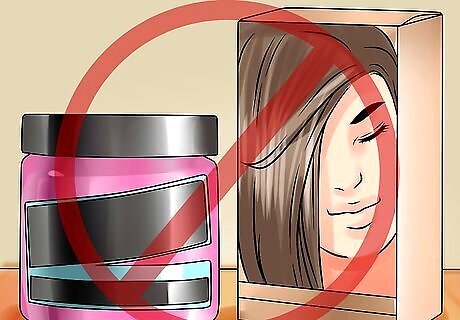
Avoid adding chemicals to your hair. Although it may seem like a given, you should be avoiding all relaxers and perms when trying to transition your hair. In addition, stay away from hair dyes and bleach, as these cause significant damage to your hair, causing it to break and become frizzy. Look for all natural alternatives to chemicals you typically use, as these will be much safer on your scalp and strands than harsh chemicals are.
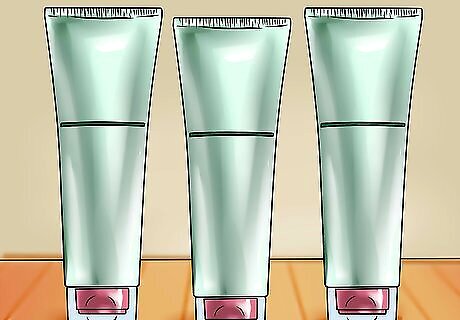
Purchase new hair products. As it turns out, not all hair products are created equally. With a huge variety on the market, it can be difficult to find products that will work with your hair and your wallet. When transitioning your hair though, it is vital to get transition-friendly hair supplies. Look for sulphate-free conditioning shampoos, as well as other hair treatments advertised specifically for use in transitioning hair. Although these won’t necessarily change the appearance of your hair, they will work hard to prevent further damage and reverse current damage in your locks. If you go to a salon that specializes in transitioning hair, ask for recommendations in hair products. If nothing else, find a sulfate-free shampoo. Sulfate (present in most cheap shampoos) causes significant drying of hair strands and it clogs up the pores of the scalp, reducing hair growth.
Changing Your Style
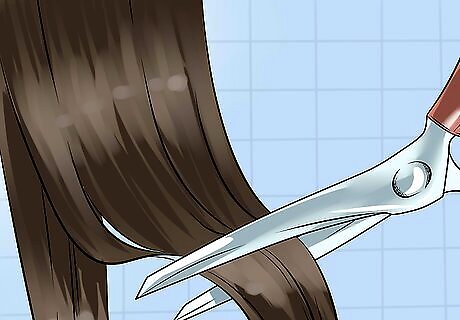
Consider the ‘big chop’. It is common for people transitioning their hair to go ahead and do the big chop - that is, cutting off all the relaxed hair, leaving a short amount of new growth near the scalp. This is certainly the best option for creating healthy growth, but not everyone wants their hair to be less than an inch long. If you’re bold enough to try a new look, the big chop is an excellent choice for immediately getting rid of all your relaxed hair, creating an immediate full transition to natural hair.
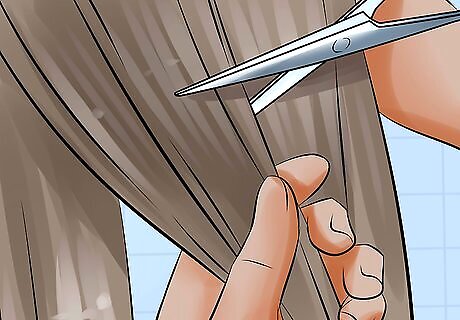
Trim your hair regularly. Relaxers are permanent, so whatever parts of your hair that have been in contact with a relaxer will never grow back naturally. Therefore, at some point in time your hair must be cut off to above the demarcation line. If you’re not willing to go for the big chop, the next step is to do regular trims of your hair. Start by cutting off a few inches of your hair, and then once a month cut off ¼-½ an inch of hair. Over time you’ll have removed all of the damaged, relaxed hair to above the demarcation line, allowing your natural hair to grow more strongly.

Cover up your new growth. The first couple inches of new, natural growth can appear strange when juxtaposed next to your relaxed hair. In order to avoid damaging it further with tight styles, use accessories to hide your curly roots. Headbands and head scarves are popular options for hiding your roots while allowing the rest of your hair to show through.
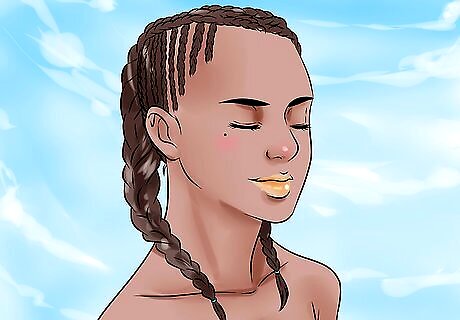
Try using braids or twists. Although tight cornrows can cause breakage, using loose cornrows, braids, and twists are a great way to add interest to your hair without damaging it. The most manageable transitioning hairstyles are box braids and Senegalese twists. These hairstyles include little to no hair manipulation and they give a lot of hair protection since the extension hair is covering your real hair. Mastering each style can be tricky, so spend some time finding which works best with your hair and personal stylistic preferences. The most important thing is to keep whatever style you use very loose, so as to avoid stressing the strands of hair. Your hair is most fragile at the demarcation line, so be particularly gentle when styling it around this point.
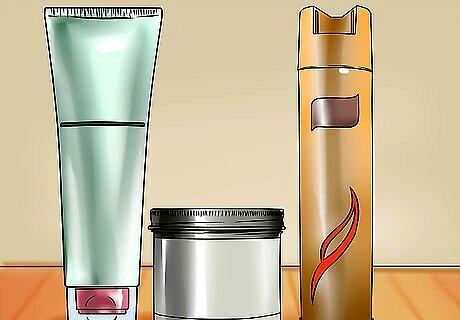
Find a great styling product. Many women can vouch for the importance of owning a good hair gel, pomade, or spray; with the right products, you can cover up even the most unsightly of hair styles. Sort through your styling products, and try using them (rather than a tight style with clips or elastic bands) to style your hair. You may like the results better, and it will be safer and more gentle on your fragile hair as well.
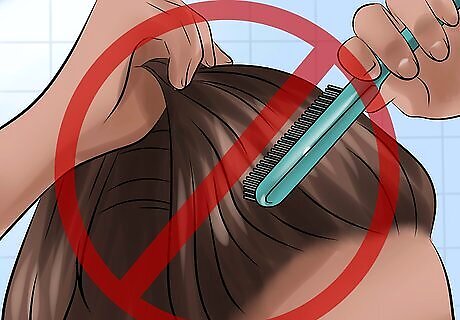
Avoid dealing with your hair too much. Although it can be tricky not to, the more you touch and style your hair, the more likely it is to break and become frizzy. Try not to brush your hair too often, and avoid styles that put strain on your scalp. If you do brush your hair, start from the bottom and work your way up using a comb (not a brush).




















Comments
0 comment